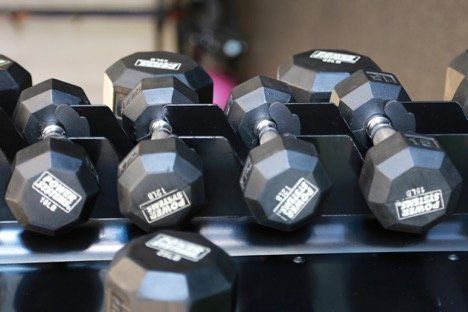The Importance of Diversifying Your Workouts
You know the saying: Variety is the spice of life. Well, it’s also what gives your exercise routine the flavor your body craves. While it’s tempting to do the same workouts when you hit the gym, 30 minutes on an elliptical three days a week isn’t going to get you the results you want. Adding variety guarantees you’ll reach your goals while having a great time. Here is why diversifying your workouts is so important.
Avoid boredom and burnout
Sure, there’s comfort in doing the same workout. You know the moves, or your route, or how long a workout will take you. But, repeating the same workout is really only effective if you’re trying to build the habit of exercising. Once you’ve built the habit, how long until you’re bored of going to the gym? How long will it take until you’d rather not run the three mile loop by your house or lift the same weights the same amount of time three days a week?
Diversifying your workouts makes each time you step into the gym an adventure. Experienced personal trainers will always look for ways to challenge you, both mentally and physically. If you’re constantly changing your workouts, you won’t get bored, and you will be more likely to continue to exercise.
Never plateau
Sticking with the same workout actually prevents you from reaching the results you want. Why is that? Well, after about six weeks, your body adapts to the workout routine and essentially stops feeling challenged. Muscle memory is helpful for developing efficiency (same results with less effort), but will eventually stall your progress. Changing your workout routine makes your body work harder, which will burn more calories and fat while building more muscle.
Build your muscles more effectively
When your exercises vary, your muscles have to strain to accommodate the changes. Even if the change is small–going from a walking lunge to a rear foot elevated split squat, for example–your body will utilize the same muscles in different ways. This differentiation ensures that you’ll continue improving and strengthening the exercise pattern, instead of just repeating the same thing getting more efficient, but not stronger.
Here’s another example: a standard deadlift is a great exercise for developing strength in the posterior chain. However, when you change up the routine with a sumo deadlift, you’re now targeting different areas of the same muscles while hitting new ones.
When you vary your workout, you’ll hit muscles you may otherwise ignore. You’ll be sore in places you didn’t know you could be sore. You’ll target areas that haven’t been utilized before or utilized correctly. You’ll fix muscle imbalances. In essence, you’ll get better full-body results by diversifying your routine.
If you don’t know where or how to start diversifying your fitness routine, let Denver’s Vitruvian Fitness help you. Our team of experts will devise a personalized routine according to the results of your Functional Movement Screen™ and coach you through your workouts every step of the way. We train in two-and-three week blocks, so you and your body will never have a chance to get bored. We also offer a variety of fitness classes–from indoor cycling to TRX training–so you always have the option to try something new. If you’re looking to exercise in a supportive but challenging environment, contact us today.
You might also enjoy these posts . . .








